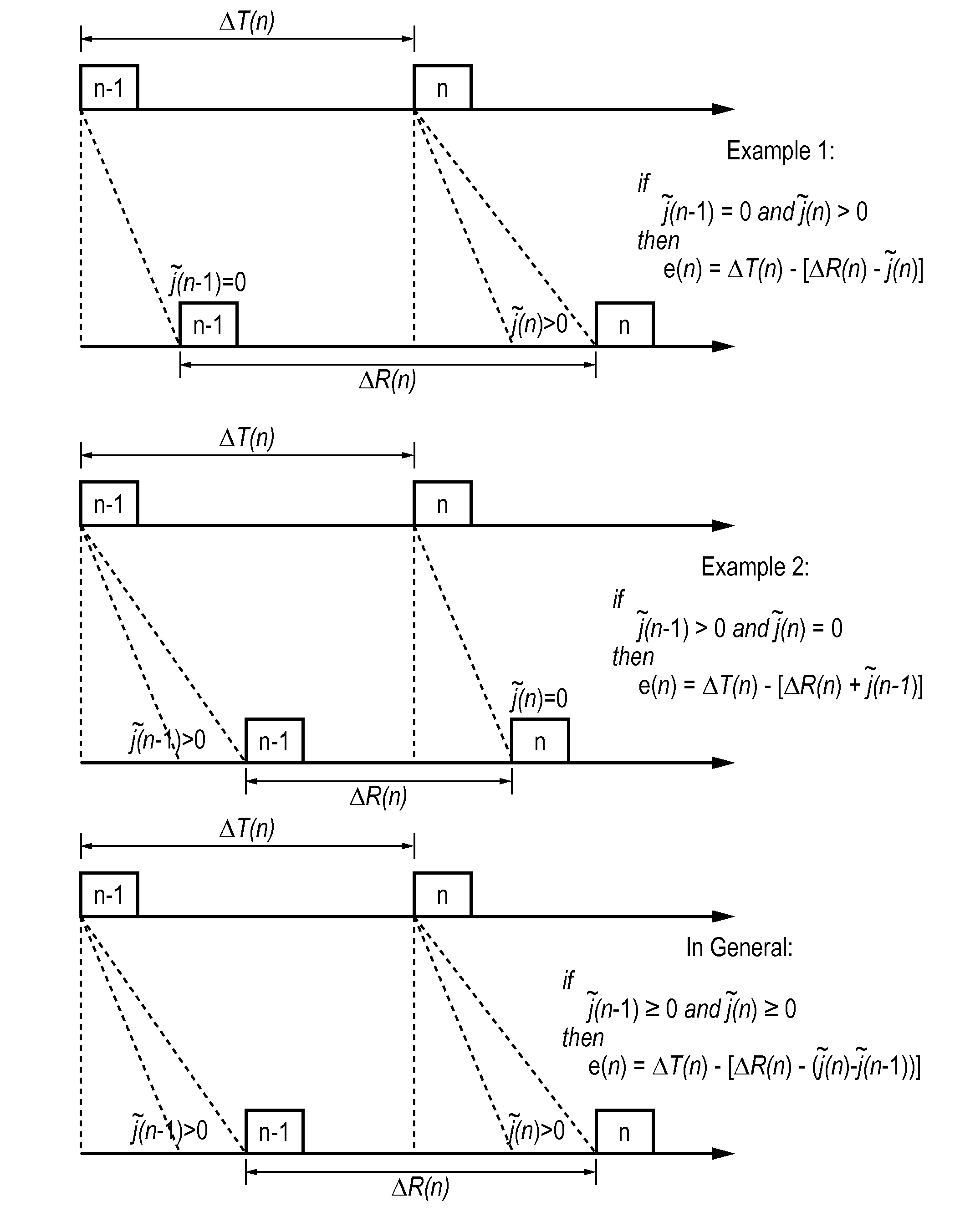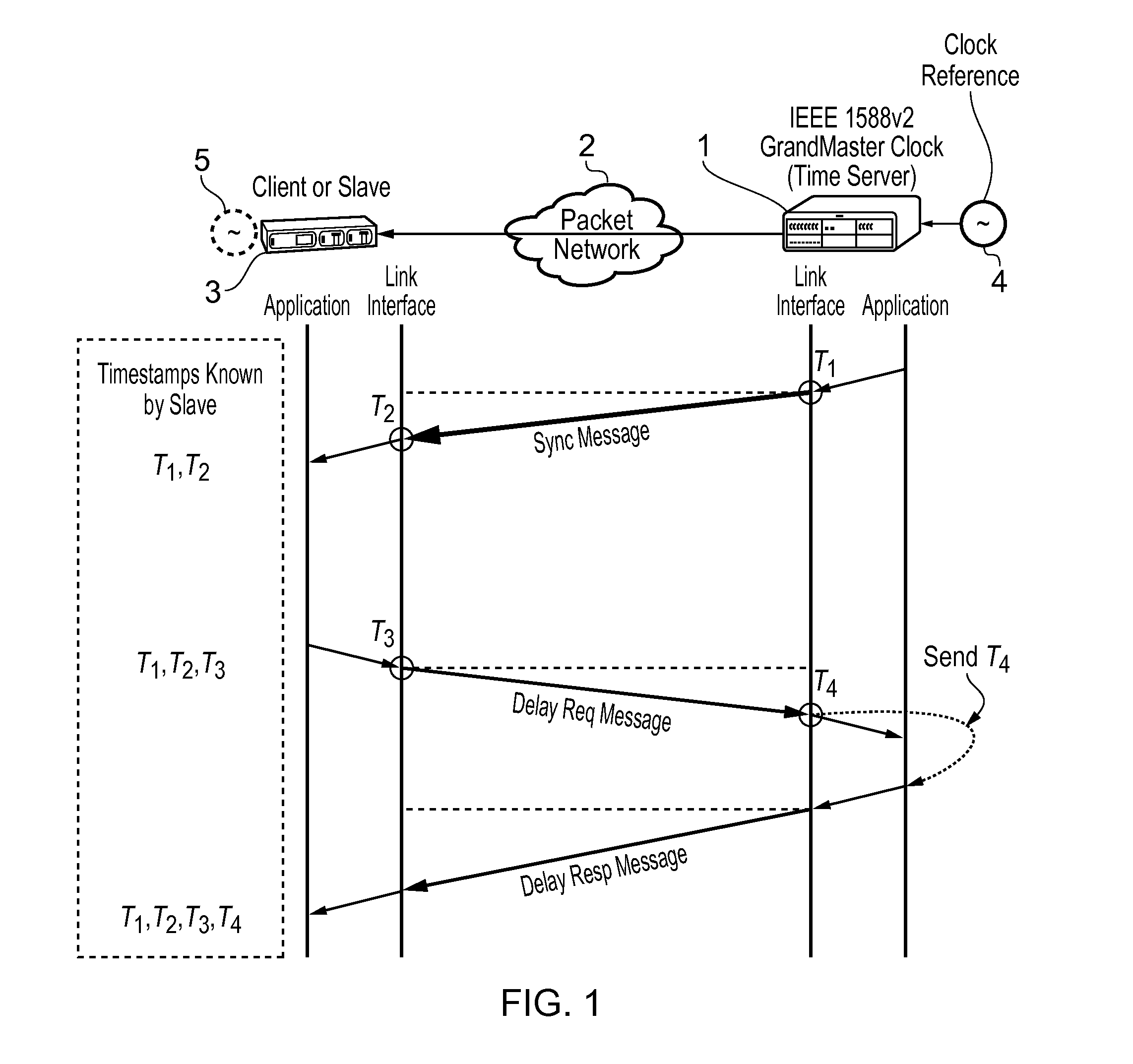Method and devices for frequency distribution
a frequency distribution and frequency technology, applied in the field of frequency distribution methods and devices, can solve the problems of inability to accurately measure and clock synchronization the path delay, the packet delay is variable, and the clock noise is contributory to the recovery clock. , to achieve the effect of high accuracy synchronization, good synchronization, and high accuracy synchronization
- Summary
- Abstract
- Description
- Claims
- Application Information
AI Technical Summary
Problems solved by technology
Method used
Image
Examples
Embodiment Construction
[0132]Accordingly, at their broadest, methods of the present invention provide for synchronising the frequency of an oscillator in a slave device to the frequency of a master clock in a master device by taking account of delay variations to messages between them.
[0133]A first aspect of the present invention provides a method of synchronising the frequency of an oscillator in a slave device to the frequency of a master clock in a master device, the method including the steps of:
[0134]a) receiving in the slave device a first message from said master device having a first time-stamp which is a time-stamp of said master clock indicating the precise time of sending of said first message and a first correction value which is the cumulative delay encountered by the message during its passage from the master device to the slave device;
[0135]b) extracting said time-stamp and said correction value from said first message and recording a first value of a counter in the slave device at the time...
PUM
 Login to View More
Login to View More Abstract
Description
Claims
Application Information
 Login to View More
Login to View More - R&D
- Intellectual Property
- Life Sciences
- Materials
- Tech Scout
- Unparalleled Data Quality
- Higher Quality Content
- 60% Fewer Hallucinations
Browse by: Latest US Patents, China's latest patents, Technical Efficacy Thesaurus, Application Domain, Technology Topic, Popular Technical Reports.
© 2025 PatSnap. All rights reserved.Legal|Privacy policy|Modern Slavery Act Transparency Statement|Sitemap|About US| Contact US: help@patsnap.com



